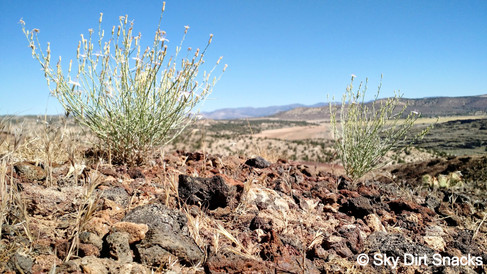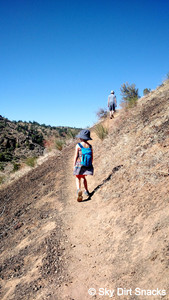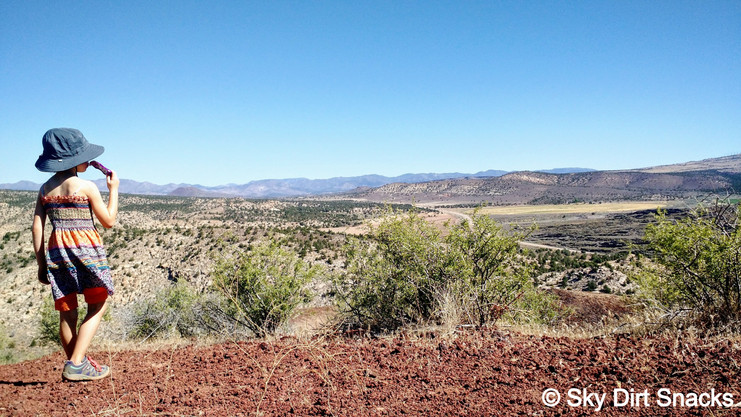Explore the remains of volcanic activity in a desert landscape.

There are a wealth of diverse trails in this park. One can traverse sand dunes, follow along old lava flows, ascend through sandstone formations, and head into a cinder cone.
Into the volcano
On our last visit, we first hiked the cinder cone trail on the north side of the park. The trail ascends 500 ft, winding around to the backside of the cone and providing great views of the surrounding area. It isn't a very long hike (about 1.5 miles). You can bet on making it through without seeing molten rock. The last volcanic activity was over 27,000 years ago.
You'll need to bring water (always carry water in the desert). The trail does a lot of up for the first half.
Your reward for making it to the top edge of the cone is to get to go down into the cone (and then back out). The picture below is taken from inside the cone. All of the dark stuff is lava rock. Pack a sturdy pair of shoes. Lava rock is not easy on them.

Incidently, my kid hates shoes. She can frequently be found hiking in less than sturdy foot-coverings. Fortunately she had hiking shoes on for this hike.
There are two ways to dismount from the cinder cone. The easier, but longer way is to go back down the same route you took up. The harder way is to surf down the front side of the cinder cone. If you choose surfing, the adult to child ratio must be 1:1. You will spend the whole 500 ft with your knees bent, providing stability over shifting rock for yourself and for your child. The price of not maintaining said stability is pretty high; lava rock isn't friendly. But, it's doable, and rather amusing ...until your quads start to burn.
Into in a lava flow
After leaving the cinder cone, we headed back into the main portion of the park, within Snow Canyon. Snow Canyon is formed largely by Navajo sandstone. The volcanic eruptions that occurred over the last million to tens of thousands of years have added a sprinkling of lava rock. During the volcanic eruptions north of the park, veins of lava tunneled under the surface, down through the canyon. As the land has shifted and eroded over time, some of the old lava flows have been exposed as lines of black rock or lava rock-lined tubes in the sandstone. Some old lava flows remain below the surface, now forming caves.
My favorite part of the day was getting to explore one of these old lava flow caves (found along the Lava Flow Trail) with my 6 year-old daughter and 80 year-old dad. As the afternoon sun began to make our exploration of the old lava flows rather hot, the trail happened to meet up with a cave entrance. Using our cell phones as flashlights, we headed down into the cave. Our impromptu visit meant that we had to shuffle who was holding the light and who was climbing. I’d suggest headlamps. I would have liked one.
We descended into the main chamber of the cave, which smelled like it was home to more than one animal species. Due to the less than gradual decent, my daughter needed help bridging some of the drops. Provided that your kids won’t freak out too badly in the dark (the can’t see your hand kind of dark), there was room to usher down more than one kid per adult. In fact, there were a couple of other groups with us in which the adults were heavily outnumbered. Our exploration of the cave continued until the main chamber abruptly dwindled into a small tunnel. A few of the braver kids tried to cram into the pint-sized tunnel entrance.
After surfing down a cinder cone and crawling around in a cave, we were all covered with a fine coating of dirt. Even my ginger husband looked like he was sporting melanin.
Get out and get a dirt tan.























Comments